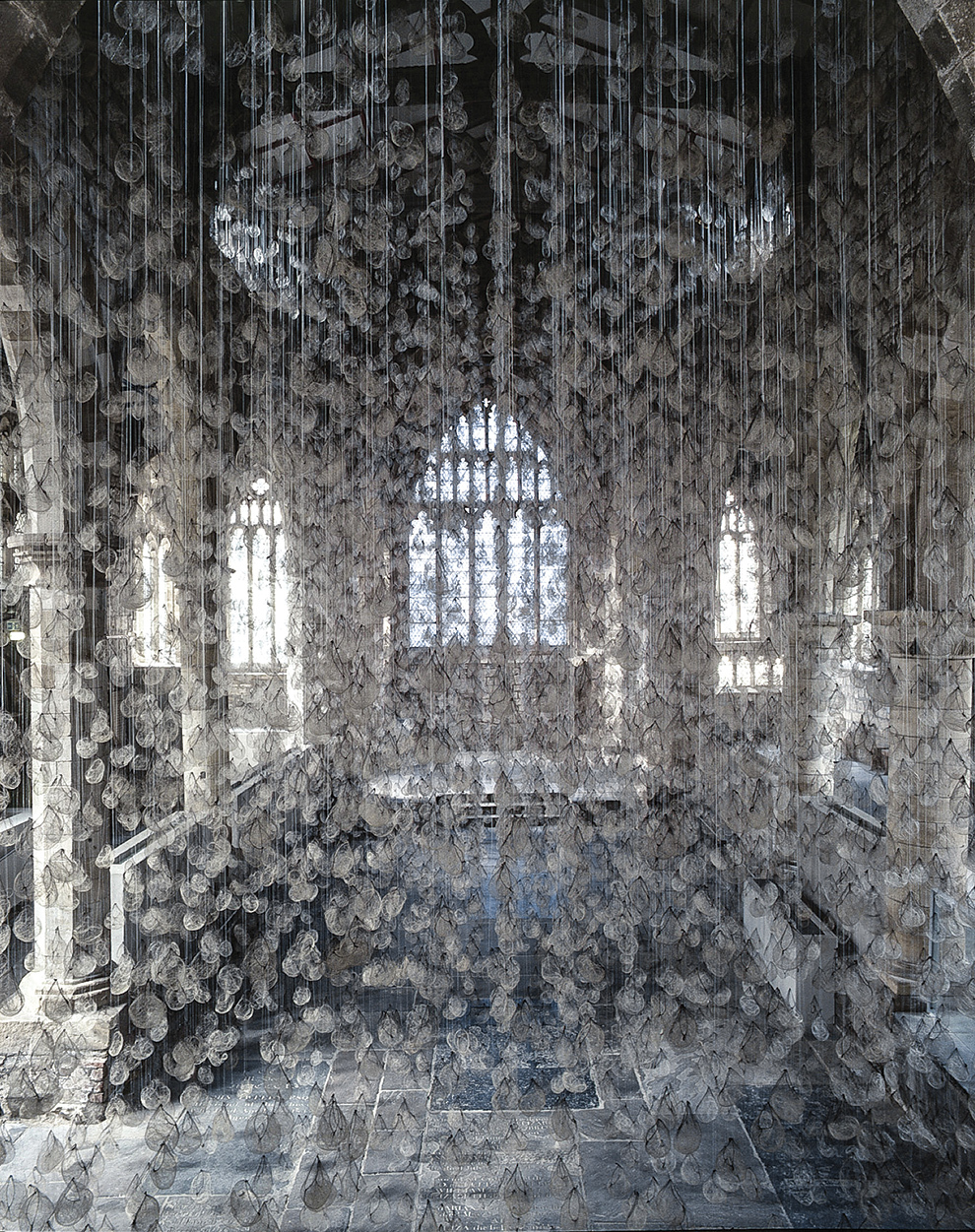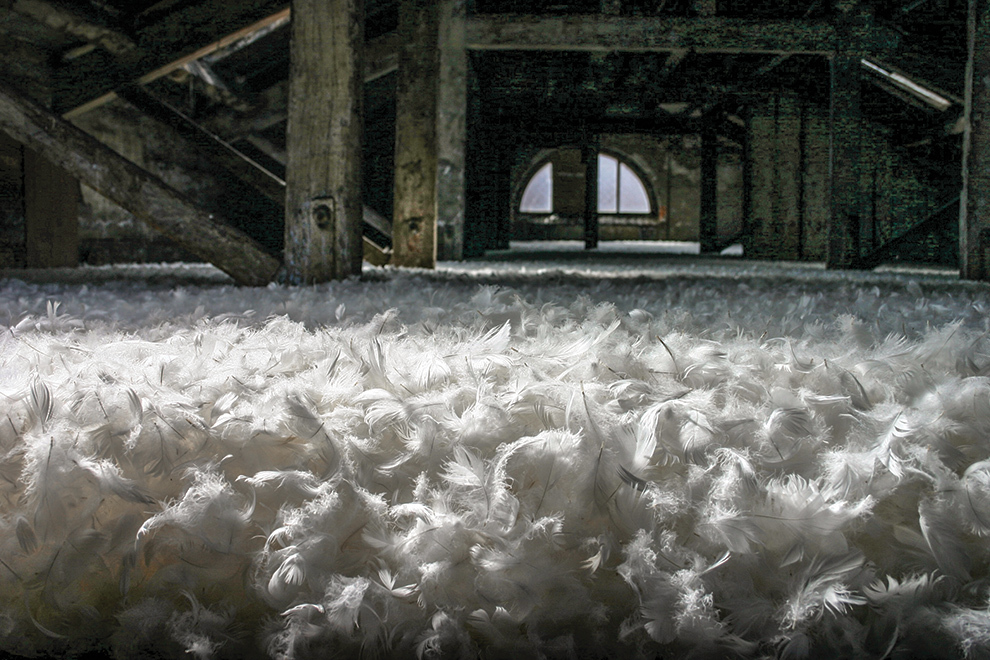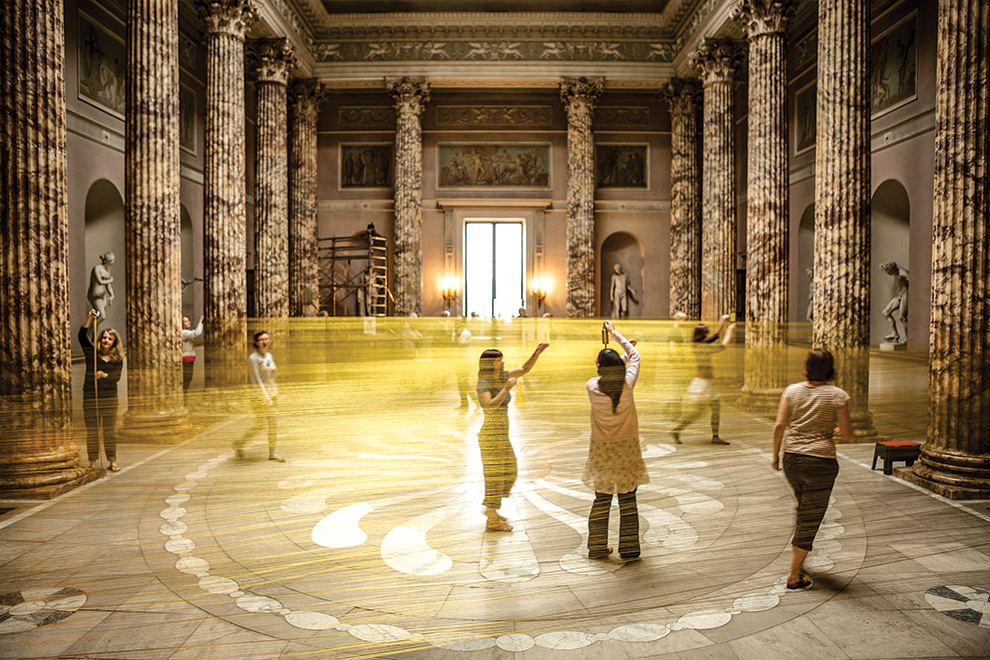The work of Susie MacMurray, a British artist who lives in Manchester, England, ranges from drawing to sculpture to site-specific installations. An engagement with materials — hairnets, feathers, barbed wire, shells — is central to her alchemy. To “tease out cultural and physical resonances between materials and place,” says MacMurray, she blends form and context in architecturally significant spaces, from stately homes to industrial settings. Her interventions in these spaces reference their historic identities and can be a laborious process involving teams of volunteers. “Working on a large installation in this way has parallels with an orchestral performance,” she says, “but also with the tradition of women gathering together to weave or sew, sharing knowledge and wisdom as they work.” Trained as a musician more than three decades ago, MacMurray turned to art in the late ’90s and has been exhibited widely in galleries and museums.
“Making art has for me become a richer, more natural language than music for exploring what it means to be human.”
— Susie MacMurray








